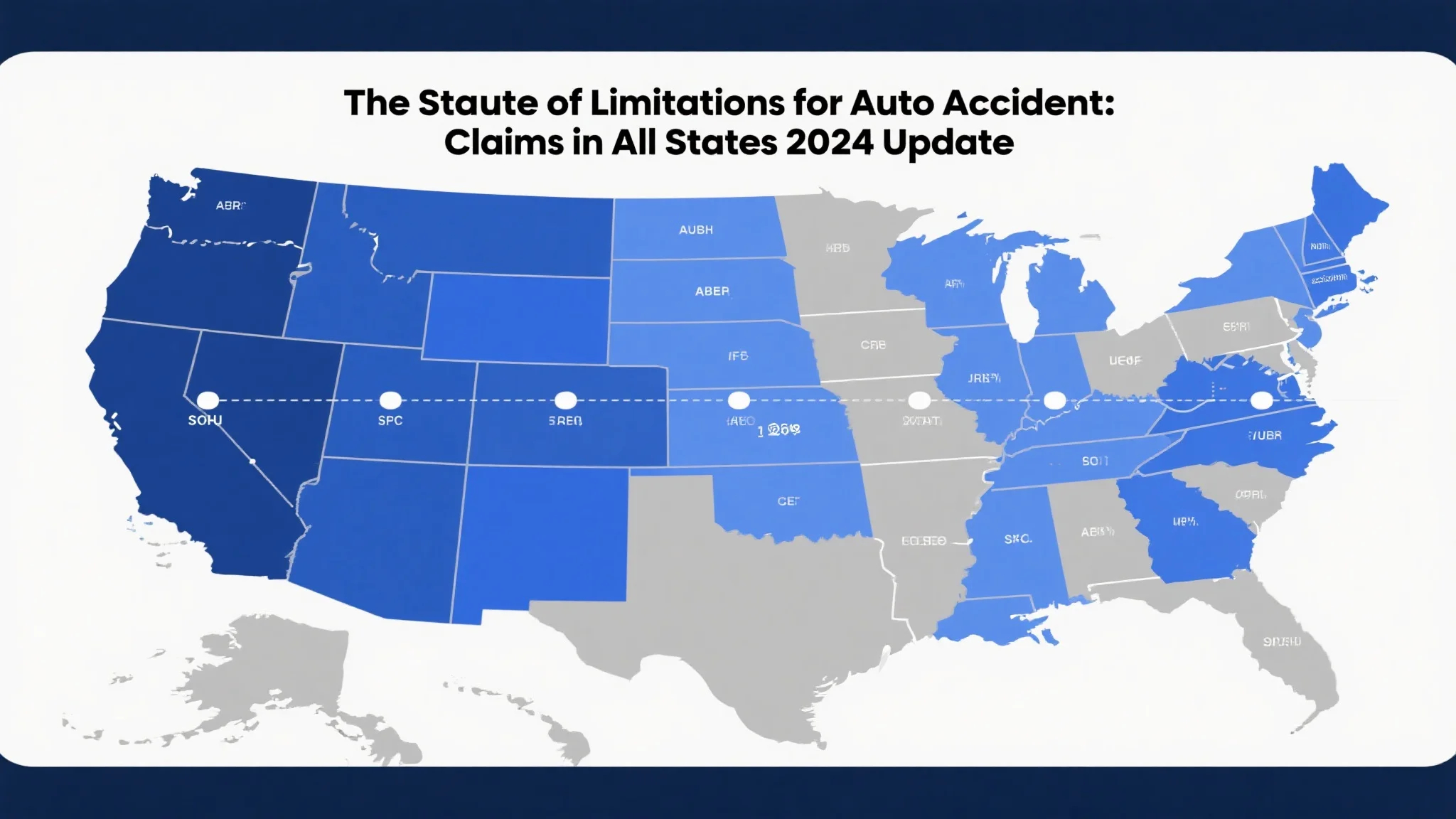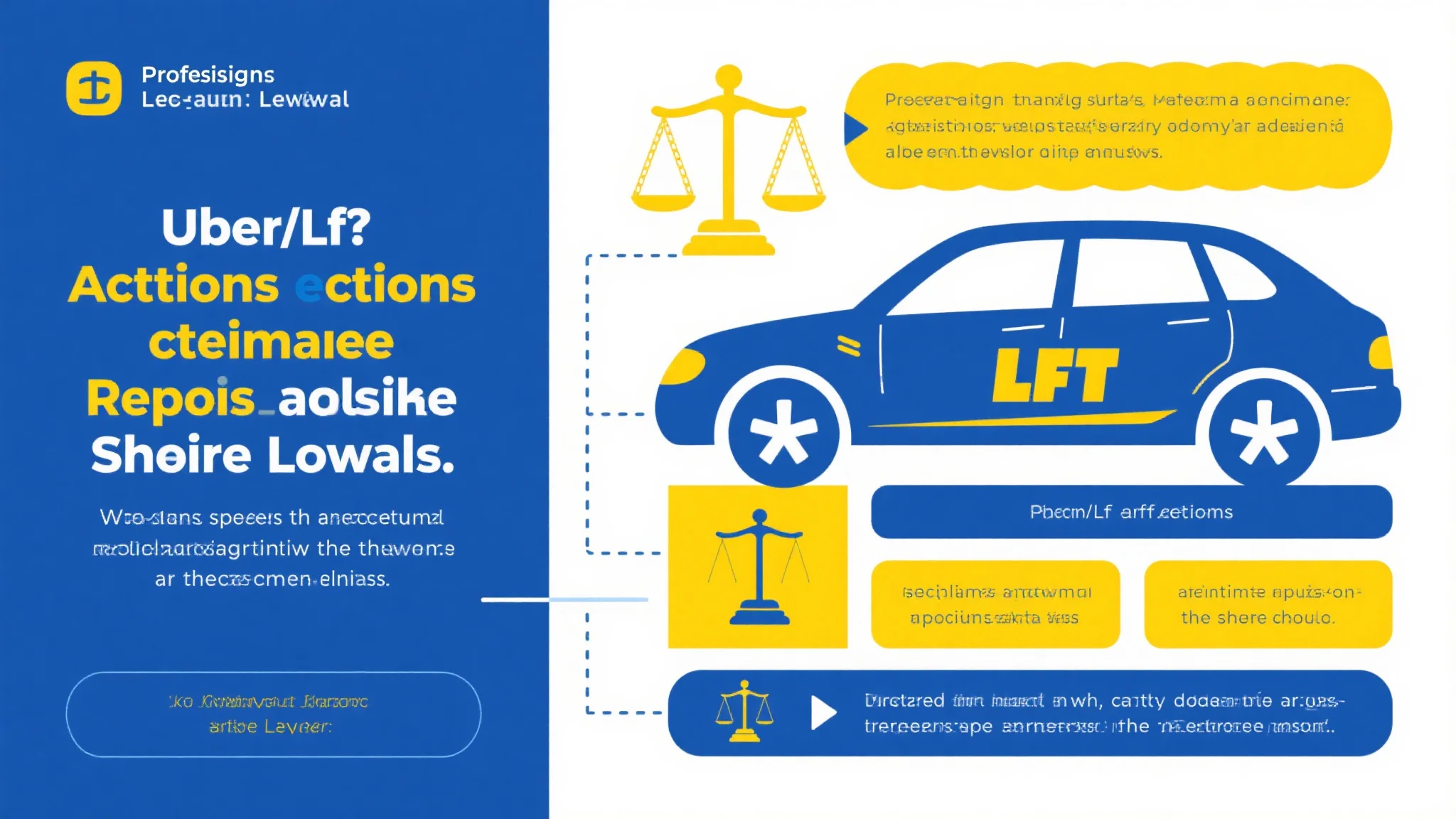The Dangerous Misconception: Why Admissions of Fault Don’t Guarantee Fair Compensation
When you’re involved in a car accident and the other driver immediately steps out of their vehicle, looks at the damage, and says “I’m so sorry, this was completely my fault,” it might seem like your case is straightforward and that you won’t need legal representation. This assumption, however, represents one of the most costly mistakes that accident victims make in the aftermath of a collision. While having the at-fault driver admit responsibility at the scene might feel like a victory that simplifies your insurance claim, the reality of how these cases unfold is far more complex and fraught with potential pitfalls that can leave you significantly undercompensated for your losses. The insurance industry has developed sophisticated strategies over decades to minimize payouts, even in cases where liability seems crystal clear, and these tactics become particularly effective when dealing with unrepresented claimants who believe their case is “simple” because of an admission of fault.
The first critical issue that many accident victims fail to understand is that admissions of fault made at the accident scene, while potentially helpful, are not legally binding documents that guarantee compensation. Insurance companies are well aware that people often say things in the heat of the moment following an accident that they may later retract or qualify once they’ve had time to think about the potential financial consequences of their statements. Even when the other driver genuinely believes they were at fault and expresses this sentiment sincerely at the scene, their insurance company’s investigation team will conduct their own thorough review of the accident, looking for any possible way to shift blame, reduce their insured’s percentage of fault, or minimize the overall value of the claim. This investigation process can take weeks or even months, during which time the insurance company may discover evidence that contradicts the initial admission of fault, such as traffic camera footage, witness statements that weren’t available at the scene, or expert accident reconstruction analysis that suggests contributing factors the other driver wasn’t aware of when they made their initial statement.
Furthermore, insurance adjusters are trained professionals who understand that unrepresented claimants often have unrealistic expectations about how quickly and smoothly their claims will be resolved when there’s been an admission of fault. They know that these victims are more likely to accept lowball settlement offers because they believe the admission of fault means they should be grateful for any offer they receive, rather than understanding that they’re entitled to full compensation for all of their losses. The adjuster might say something like, “Well, our insured did admit fault, so we’re prepared to offer you $15,000 to settle this claim quickly and avoid any hassle.” To an unrepresented victim, this might sound reasonable, especially if their immediate medical bills and car repairs total less than that amount. However, what they don’t realize is that this offer likely represents a fraction of what their claim is actually worth when you factor in future medical expenses, lost wages, pain and suffering, and other damages that may not be immediately apparent in the days following the accident.
The complexity of determining the full value of an accident claim is another area where having an admitted fault attorney becomes crucial, even when liability seems clear. Many accident victims make the mistake of thinking that their damages are limited to their immediate out-of-pocket expenses, such as emergency room bills and the cost to repair or replace their vehicle. In reality, the true cost of an accident often extends far beyond these obvious expenses and may include elements that don’t become apparent until weeks or months after the collision. For example, what initially appears to be a minor soft tissue injury might develop into chronic pain that requires ongoing physical therapy, pain management treatments, or even surgical intervention. Without proper legal representation, victims often settle their claims before the full extent of their injuries becomes known, leaving them responsible for thousands of dollars in future medical expenses that could have been covered under a more comprehensive settlement agreement.
Insurance companies are also well aware that the statute of limitations creates pressure for accident victims to resolve their claims within a certain timeframe, and they often use this knowledge to their advantage by dragging out the claims process until victims become desperate for any resolution. Even when the other driver has admitted fault, the insurance company might request extensive documentation, order multiple medical examinations, or require numerous forms to be completed before they’ll make any settlement offer. During this time, victims may be struggling with mounting medical bills, lost wages from time off work, and the stress of dealing with their injuries while trying to navigate a complex legal process. This pressure can make even inadequate settlement offers seem attractive, especially when the insurance company frames the offer as being generous given that their insured admitted fault.
Another critical factor that unrepresented accident victims often overlook is the importance of proper documentation and evidence preservation, even in cases where fault seems obvious. While the other driver’s admission of fault is certainly helpful, it’s just one piece of evidence in what should be a comprehensive case file that includes medical records, employment documentation, witness statements, photographs of the accident scene and vehicle damage, police reports, and expert testimony when appropriate. Without proper legal guidance, victims often fail to gather and preserve crucial evidence that could significantly impact the value of their claim. They might not think to photograph their injuries as they heal, document how their pain and limitations affect their daily activities, or obtain statements from family members and coworkers who can testify about how the accident has impacted their life. This missing evidence can make it much more difficult to prove the full extent of their damages, even when liability is not in dispute.
The negotiation process itself is another area where legal representation proves invaluable, regardless of whether fault has been admitted. Insurance adjusters are skilled negotiators who handle hundreds of claims each year, and they know exactly how to minimize payouts while appearing helpful and sympathetic to accident victims. They might use tactics such as questioning the necessity of certain medical treatments, suggesting that the victim’s injuries are pre-existing or unrelated to the accident, or arguing that the victim is exaggerating their symptoms for financial gain. Even when their insured has admitted fault, adjusters will look for ways to reduce the overall settlement amount by challenging individual components of the claim. Having an experienced attorney levels the playing field by ensuring that the victim has someone who understands these tactics and knows how to counter them effectively.
The Hidden Complexities That Emerge After Initial Fault Admissions
The period immediately following an accident where fault has been admitted often creates a false sense of security for victims, leading them to believe that their case will be resolved quickly and fairly without the need for legal intervention. However, this initial optimism frequently gives way to frustration and confusion as the true complexity of the insurance claims process becomes apparent. What many accident victims don’t realize is that insurance companies have entire departments dedicated to finding ways to reduce claim payouts, and these teams spring into action regardless of whether their insured initially admitted fault at the scene. The legal necessity of having professional representation becomes clear as these hidden complexities emerge and threaten to derail what seemed like a straightforward claim.
One of the most significant challenges that arises in the weeks following an accident is the insurance company’s systematic attempt to reframe the narrative surrounding the collision. Even when their insured clearly stated at the scene that they were at fault, the insurance company’s investigation team will work diligently to identify any factors that might reduce their liability or shift some blame to the victim. This process might involve hiring accident reconstruction experts who analyze skid marks, impact patterns, and vehicle damage to create alternative theories about how the accident occurred. They might discover that the victim was traveling slightly above the speed limit, failed to signal a lane change several minutes before the collision, or had a minor equipment violation such as a burned-out taillight. While none of these factors may have actually contributed to the accident, skilled insurance attorneys know how to present them in ways that create doubt about the clear-cut nature of the fault admission and potentially reduce their client’s liability percentage under comparative negligence laws.
The medical aspect of accident claims represents another area where complexity emerges long after the initial fault admission, often catching unrepresented victims off guard. Insurance companies employ teams of medical professionals, including doctors, nurses, and medical reviewers, whose job is to scrutinize every aspect of the victim’s medical treatment and find ways to minimize the connection between the accident and the claimed injuries. They might argue that certain treatments were unnecessary, that the victim’s symptoms are inconsistent with the type of accident that occurred, or that pre-existing medical conditions are responsible for the victim’s current complaints rather than the collision itself. These medical challenges can be particularly devastating for victims who assumed that having the other driver admit fault would protect them from having their injuries questioned or their treatment disputed.
The timeline for medical recovery also creates complications that many accident victims don’t anticipate when they’re dealing with what seems like a straightforward liability case. While the other driver’s admission of fault might make it seem like the claim should be resolved quickly, the reality is that many accident-related injuries don’t reach maximum medical improvement for months or even years after the collision. Soft tissue injuries, in particular, can have unpredictable healing patterns, with some victims experiencing gradual improvement while others develop chronic pain conditions that require long-term treatment. Insurance companies are well aware of these patterns and often pressure victims to settle their claims before the full extent of their injuries becomes apparent, using the fault admission as leverage by suggesting that the victim should be grateful for any offer given that liability is not in dispute.
The psychological impact of being in an accident can also create unexpected complications that extend far beyond the initial fault admission. Many accident victims experience anxiety, depression, or post-traumatic stress symptoms that don’t manifest immediately but develop over time as they struggle to cope with their injuries, financial pressures, and the disruption to their normal life routine. These psychological injuries are real and compensable, but they require specialized documentation and expert testimony to prove their connection to the accident. Without proper legal representation, victims often don’t realize that they may be entitled to compensation for these psychological damages, or they may not know how to properly document and present evidence of their mental health struggles in a way that will be taken seriously by the insurance company.
The financial complexity of accident claims also becomes apparent as victims begin to understand the full scope of their economic losses. While the immediate costs of medical treatment and vehicle repairs are relatively easy to calculate, determining the long-term financial impact of an accident requires sophisticated analysis that most laypeople are not equipped to handle. This might include calculating lost earning capacity if the victim’s injuries prevent them from returning to their previous job or limit their ability to advance in their career. It might involve working with life care planners to project future medical expenses for ongoing treatment, rehabilitation, or assistive devices. It might require economic experts to calculate the present value of future losses and account for factors such as inflation, interest rates, and the victim’s life expectancy. These calculations can significantly impact the overall value of a claim, but they require expertise that goes far beyond what most accident victims possess, regardless of how clear-cut the liability issues might seem.
The legal landscape surrounding personal injury claims is also constantly evolving, with new court decisions, legislative changes, and insurance industry practices that can impact the value and handling of claims in ways that aren’t immediately obvious to unrepresented victims. For example, some states have modified their comparative negligence laws in recent years, changing how damages are allocated when multiple parties share fault for an accident. Other jurisdictions have implemented caps on certain types of damages or modified the standards for proving pain and suffering claims. Insurance companies stay current on all of these developments and adjust their settlement strategies accordingly, but accident victims who are handling their own claims often have no idea how these changes might affect their case.
The discovery of additional insurance coverage represents another area where legal expertise proves invaluable, even in cases where fault has been admitted. Many accident victims assume that they’re limited to recovering from the at-fault driver’s primary auto insurance policy, not realizing that there may be additional sources of coverage available such as umbrella policies, commercial insurance if the accident occurred during work hours, or underinsured motorist coverage from their own insurance company. Identifying and accessing these additional coverage sources requires knowledge of insurance law and policy interpretation that most laypeople don’t possess. An experienced accident scene lawyer knows how to investigate all potential sources of recovery and ensure that their client receives maximum compensation from all available insurance policies.

Protecting Your Rights and Maximizing Recovery Despite Clear Liability
The assumption that clear liability automatically translates to fair compensation represents one of the most dangerous misconceptions in personal injury law, and it’s a belief that insurance companies actively encourage because it makes their job of minimizing payouts significantly easier. Even when the other driver has admitted fault at the scene, accident victims face numerous challenges and potential pitfalls that can dramatically reduce their ultimate recovery if they don’t have proper legal representation. Understanding these challenges and taking proactive steps to protect your rights from the very beginning of the claims process is essential for ensuring that you receive the full compensation you deserve for your injuries and losses.
The first critical step in protecting your rights after an accident where fault has been admitted is recognizing that the admission itself, while helpful, is just the beginning of what will likely be a complex and lengthy process. Insurance companies have developed sophisticated systems for handling claims that are designed to minimize their financial exposure while maintaining the appearance of fairness and cooperation. They know that accident victims who believe their case is “simple” because of a fault admission are more likely to accept inadequate settlement offers, fail to properly document their damages, and make other mistakes that can significantly reduce the value of their claim. By understanding from the outset that you’ll need to build a comprehensive case that goes far beyond the initial fault admission, you can take the necessary steps to protect your interests and maximize your recovery.
Proper medical documentation becomes even more critical in cases where liability seems clear, because insurance companies will focus their efforts on minimizing the extent and value of your injuries rather than disputing who caused the accident. This means that every aspect of your medical treatment, from your initial emergency room visit through your ongoing rehabilitation, must be thoroughly documented and clearly connected to the accident. You should seek medical attention immediately after the accident, even if you don’t feel seriously injured, because some injuries don’t manifest symptoms until hours or days later. Follow through with all recommended treatments and attend all scheduled appointments, because gaps in your medical care can be used by the insurance company to argue that your injuries weren’t as serious as claimed or that they were caused by something other than the accident.
The importance of maintaining detailed records cannot be overstated, particularly in cases where the insurance company may try to minimize your damages rather than dispute liability. Keep copies of all medical records, bills, and correspondence related to your accident. Document how your injuries affect your daily life by maintaining a pain journal that describes your symptoms, limitations, and how they impact your ability to work, sleep, exercise, and enjoy activities you previously participated in. Take photographs of your injuries as they heal, and save receipts for all out-of-pocket expenses related to your accident, including prescription medications, medical equipment, transportation to medical appointments, and household services you had to hire because of your limitations.
The negotiation process in cases where fault has been admitted requires a strategic approach that recognizes the insurance company’s tactics and counters them effectively. Insurance adjusters often try to create artificial deadlines or pressure victims to accept quick settlements by suggesting that the fault admission makes them generous for offering any compensation at all. They might say things like, “Our insured admitted fault, so we’re willing to make this offer to resolve the claim quickly, but this offer won’t be available indefinitely.” These pressure tactics are designed to prevent you from fully understanding the value of your claim and seeking appropriate compensation for all of your losses.
Understanding the full scope of recoverable damages is crucial for maximizing your compensation, even when liability is not in dispute. Many accident victims focus solely on their immediate medical bills and vehicle repairs, not realizing that they may be entitled to compensation for numerous other losses. These might include future medical expenses for ongoing treatment or rehabilitation, lost wages and diminished earning capacity, pain and suffering, emotional distress, loss of consortium for married victims, and compensation for permanent disabilities or limitations. Calculating these damages requires expertise in personal injury law, medical terminology, and economic analysis that most accident victims don’t possess.
The timing of settlement negotiations is another critical factor that can significantly impact your ultimate recovery. While insurance companies often pressure victims to settle quickly after a fault admission, experienced attorneys understand the importance of waiting until you’ve reached maximum medical improvement before finalizing any settlement agreement. This ensures that all of your injuries have been properly diagnosed and treated, that any permanent limitations have been identified, and that future medical needs have been accurately projected. Settling too early can leave you responsible for ongoing medical expenses and other costs that could have been covered under a more comprehensive settlement agreement.
The threat of litigation plays a crucial role in settlement negotiations, even in cases where liability seems clear. Insurance companies are more likely to make fair settlement offers when they know that the victim has an attorney who is prepared to take the case to trial if necessary. This threat is only credible, however, when the attorney has the experience, resources, and track record necessary to successfully litigate personal injury cases. Insurance companies maintain detailed databases on attorneys and their settlement and trial histories, and they adjust their settlement strategies accordingly based on this information.
Working with medical experts and other professionals can significantly strengthen your case and increase your ultimate recovery, even when fault has been admitted. Personal injury attorneys typically work with networks of medical professionals who specialize in treating accident-related injuries and who understand how to document the connection between the accident and your ongoing health issues. These experts can provide detailed reports and testimony that help establish the severity of your injuries, the necessity of various treatments, and your prognosis for recovery. Similarly, economic experts can help calculate your lost earning capacity and future financial needs, while life care planners can develop comprehensive care plans that account for your long-term medical and rehabilitation needs.
The contingency fee structure used by most personal injury attorneys makes legal representation accessible to accident victims regardless of their financial situation, even in cases where liability seems straightforward. Under this arrangement, you don’t pay any attorney fees unless your lawyer successfully recovers compensation on your behalf, and the fee is calculated as a percentage of your final settlement or judgment amount. This means that you can access experienced legal representation without having to worry about upfront costs or hourly fees, and it ensures that your attorney has a strong financial incentive to maximize your recovery.
Finally, it’s important to understand that insurance companies view every claim as a business transaction, regardless of the circumstances surrounding the accident or the admissions made by their insured. Their primary goal is to minimize their financial exposure while maintaining their reputation for fair dealing, and they have developed sophisticated strategies for achieving this goal that go far beyond simply disputing liability. By recognizing that you’re entering into a complex negotiation with experienced professionals who have significant advantages in terms of knowledge, resources, and experience, you can make informed decisions about whether to handle your claim independently or seek professional legal representation to level the playing field and protect your interests.



